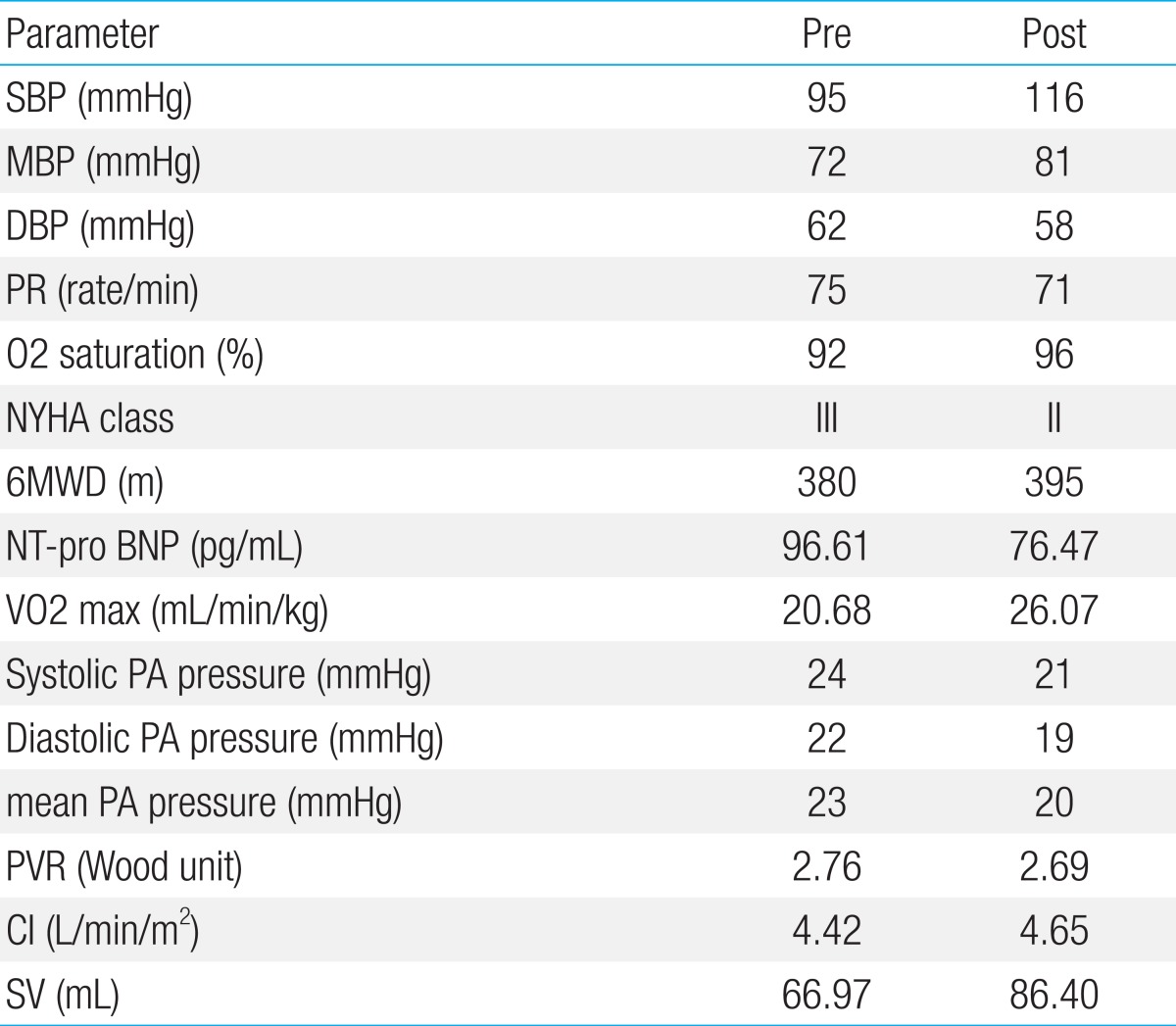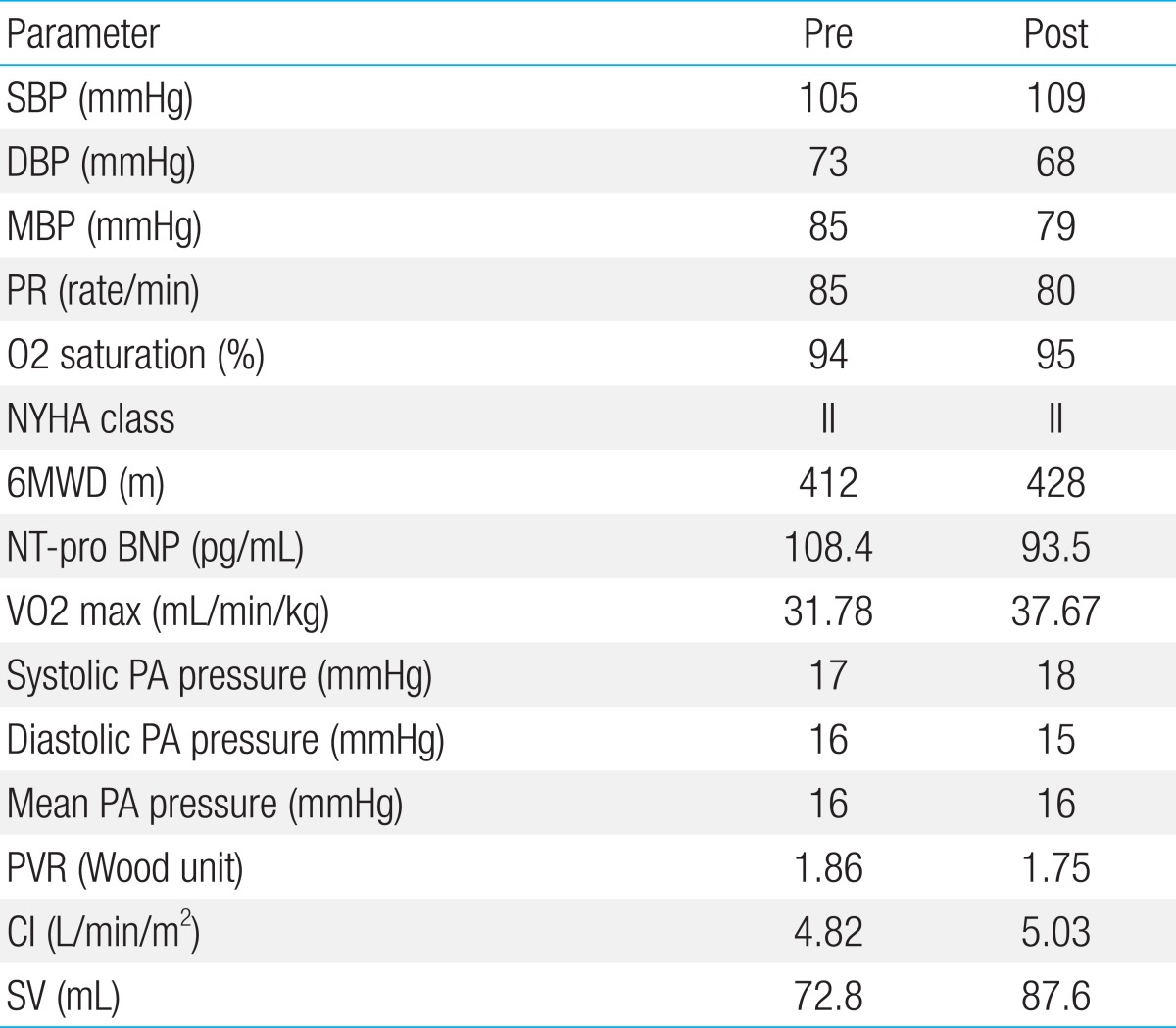1. Mondesert B, Marcotte F, Mongeon FP, Dore A, Mercier LA, Ibrahim R, et al. Fontan circulation: success or failure? Can J Cardiol 2013;29:811–820.


3. La Gerche A, Gewillig M. What limits cardiac performance during exercise in normal subjects and in healthy fontan patients? Int J Pediatr 2010;2010:Article ID 791291.
4. Gewillig M, Brown SC, Eyskens B, Heying R, Ganame J, Budts W, et al. The Fontan circulation: who controls cardiac output? Interact Cardiovasc Thorac Surg 2010;10:428–433.


5. Busse R, Fleming I. Pulsatile stretch and shear stress: physical stimuli determining the production of endothelium-derived relaxing factors. J Vasc Res 1998;35:73–84.


6. Tatum GH, Sigfusson G, Ettedgui JA, Myers JL, Cyran SE, Weber HS, et al. Pulmonary artery growth fails to match the increase in body surface area after the Fontan operation. Heart 2006;92:511–514.


7. Marrone C, Galasso G, Piccolo R, de Leva F, Paladini R, Piscione F, et al. Antiplatelet versus anticoagulation therapy after extracardiac conduit Fontan: a systematic review and meta-analysis. Pediatr Cardiol 2011;32:32–39.


9. Bowater SE, Weaver RA, Thorne SA, Clift PF. The safety and effects of bosentan in patients with a Fontan circulation. Congenit Heart Dis 2012;7:243–249.


10. Schuuring MJ, Vis JC, Bouma BJ, van Dijk AP, van Melle JP, Pieper PG, et al. Rationale and design of a trial on the role of bosentan in Fontan patients: improvement of exercise capacity? Contemp Clin Trials 2011;32:586–591.


11. Shabanian R, Shahbaznejad L, Razaghian A, Kiani A, Rahimzadeh M, Seifirad S, et al. Sildenafil and ventriculo-arterial coupling in Fontan-palliated patients: a noninvasive echocardiographic assessment. Pediatr Cardiol 2013;34:129–134.


12. Ciliberti P, Schulze-Neick I, Giardini A. Modulation of pulmonary vascular resistance as a target for therapeutic interventions in Fontan patients: focus on phosphodiesterase inhibitors. Future Cardiol 2012;8:271–284.


13. Mitchell MB, Campbell DN, Ivy D, Boucek MM, Sondheimer HM, Pietra B, et al. Evidence of pulmonary vascular disease after heart transplantation for Fontan circulation failure. J Thorac Cardiovasc Surg 2004;128:693–702.


14. Yamagishi M, Kurosawa H, Hashimoto K, Nomura K, Kitamura N. The role of plasma endothelin in the Fontan circulation. J Cardiovasc Surg (Torino) 2002;43:793–797.






 PDF Links
PDF Links PubReader
PubReader PubMed
PubMed Download Citation
Download Citation


